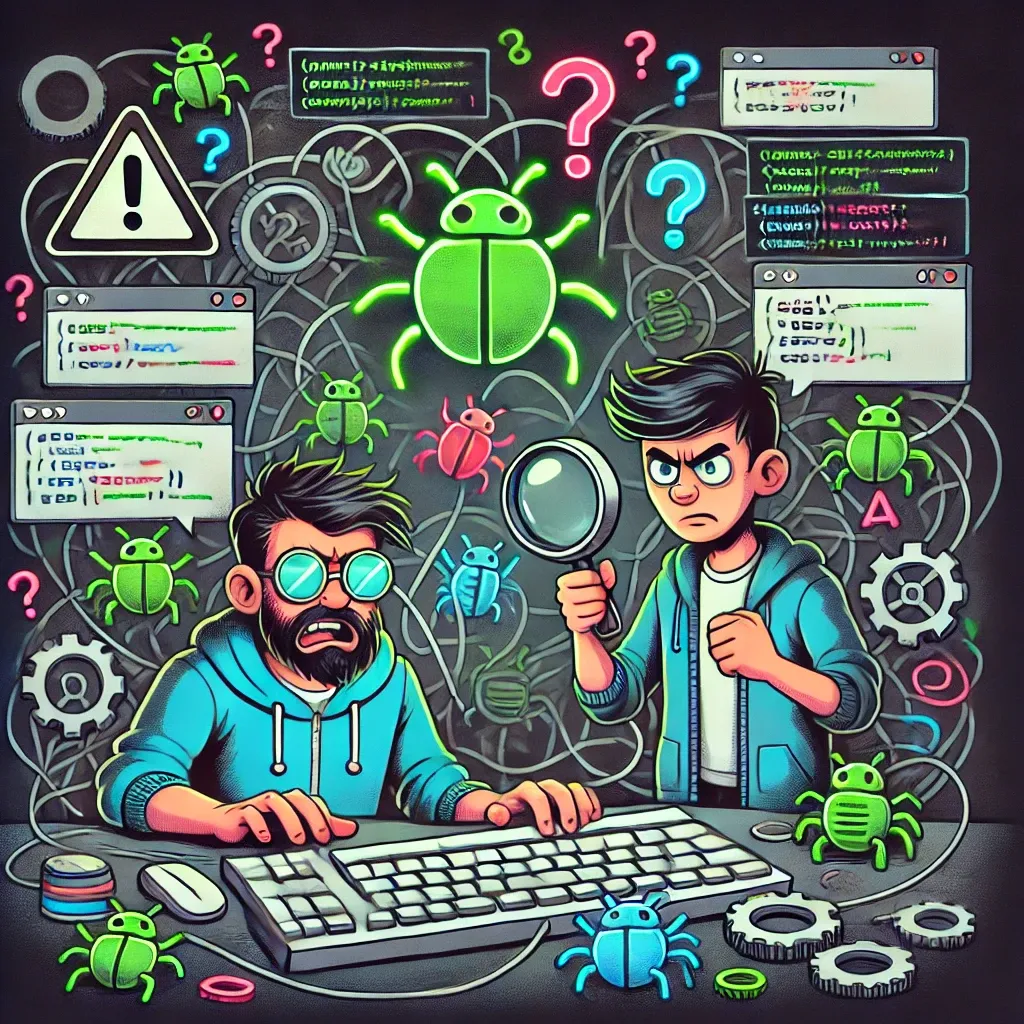Debugging Strategies for Difficult Bugs
Debug difficult bugs with these 8 proven strategies.

Debugging-The part of software development that makes you question your career choices, your life choices, and, occasionally, your sanity. It's the equivalent of trying to find a needle in a haystack, except the needle is invisible, the haystack is on fire, and you're not sure if the needle even exists. But fear not, fellow coder! Before you declare war on your keyboard, let’s look at some strategies that might just save your code and your last shred of dignity.
1. Reproduce the Bug Consistently
You know what's worse than a bug? A bug that disappears when you try to show it to someone else. Step one: calm down. Step two: find a way to reproduce the bug consistently. This might involve retracing your steps, checking logs, or even trial and error. Jokes aside, being able to reproduce the bug is crucial for any further steps.
2. Isolate the Problem
Think of debugging like being a detective. Sherlock never solved a mystery without first understanding the crime scene. Try to isolate the code that causes the problem. Comment out sections of your code, use print statements, or utilize breakpoints to zero in on the troublesome area. For more on breaking problems down, check out breaking down complex problems. And if all else fails, grab a magnifying glass and a deerstalker hat. It couldn't hurt.
3. Check the Error Messages
Error messages are like that one friend who always points out your flaws. Annoying, yes, but they might have a point. Don't dismiss them just because they’re cryptic. Spend some time analyzing what they’re trying to tell you. Even the most incomprehensible error messages can lead you closer to the solution if you decode them patiently.
4. Take a Break
Believe it or not, sometimes the best way to solve a problem is to stop trying to solve it. Step away from the screen. Go for a walk, make a cup of coffee, or just scream into the void. A fresh perspective can do wonders for your mental clarity, and you might find that the solution comes to you when you’re not even looking for it. For insights on maintaining your cool, see problem-solving under pressure.

5. Consult the Documentation
Ah, the documentation. Often overlooked, often misunderstood, and occasionally written in a dialect no one speaks. But sometimes, it holds the key to your salvation. Take a moment to consult the documentation for any functions or libraries you’re using. You might discover that there’s a known issue or a handy workaround you didn’t know about. For more on effective problem-solving, consider reading effective problem-solving steps.
6. Ask for Help
When all else fails, swallow your pride and ask for help. This could mean consulting a colleague, posting on a forum, or even asking that Stack Overflow guru who seems to know everything. You’re not admitting defeat; you’re showing that you’re smart enough to leverage the wisdom of others. Plus, someone else might have already encountered and solved your exact issue. For more on collaborative efforts, check out collaborative problem-solving.
7. Employ Debugging Tools
Debugging tools are your trusty sidekicks in the battle against bugs. From simple print statements (don’t underestimate their power) to sophisticated debuggers like GDB or Visual Studio's integrated debugger, these tools can help you trace the problem and understand what's going wrong. Use them wisely, and they might just make the difference between a quick fix and an all-nighter. For more efficiency tips, explore tools for efficiency.
8. Consider the Bigger Picture
Sometimes, the bug isn’t in your code but in your assumptions. Consider if there's a misunderstanding about how the system should work or if there's an external factor influencing your code. Maybe the problem lies in the data, the environment, or even the user’s actions. Expanding your perspective can often lead to unexpected insights. To learn about reframing issues, see reframing problems.
Conclusion
Debugging is an art, a science, and occasionally an exercise in futility. But with the right strategies, you can tackle even the most stubborn bugs. Remember, every bug you conquer is a testament to your perseverance and skill. So next time you’re faced with a difficult bug, take a deep breath, channel your inner detective, and dive into the challenge. After all, it’s not just about squashing bugs—it’s about becoming a better developer in the process.




